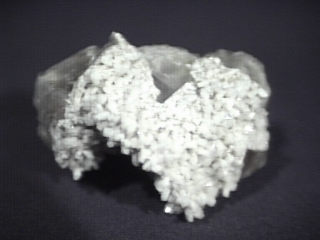 THE MINERAL EDINGTONITE
THE MINERAL EDINGTONITE
- Chemistry: BaAl2Si3O10 - 4H2O, Hydrated Barium Aluminum Silicate.
- Class: Silicates
- Subclass: Tectosilicates
- Group: Zeolites
- Uses: As mineral specimens and chemical filters.
Specimens
Edingtonite's structure has a typical zeolite openness that allows large ions and molecules to reside and actually move around inside the overall framework. The structure actually contains open channels that allow water and large ions to travel into and out of the crystal structure. The size of these channels controls the size of the molecules or ions and therefore a zeolite like edingtonite can act as a chemical sieve, allowing some ions to pass through while blocking others.
Edingtonite is one of only two zeolites to have barium in its chemistry. The other one is harmotome, with a formula of BaAl2Si6O16 - 6H2O. The heavy barium ion gives edingtonite the highest density of any zeolite. The larger amounts of water and the lower barium ion ratio lowers harmotome's density in relation to edingtonite.
PHYSICAL CHARACTERISTICS:
- Color is colorless or white.
- Luster is vitreous to dull.
- Transparency: Crystals can be transparent but most commonly are just translucent.
- Crystal System is tetragonal and orthorhombic.
- Crystal Habits include blocky to prismatic or bladed crystals usually with a square cross-section, also massive.
- Cleavage is perfect in one direction lengthwise.
- Fracture is uneven.
- Hardness is 4
- Specific Gravity is approximately 2.8 (average, although heavy for a zeolite).
- Streak is white.
- Associated Minerals are
manganite ,heulandite , natrolite, stilbite and other zeolites. - Notable Occurrences include Ice River, Canada; Old Kilpatrick, Scotland and Bohlet, Sweden.
- Best Field Indicators are crystal habit, density and associations.










